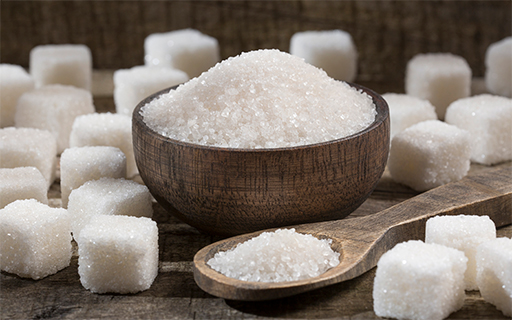- Home
- Archives
BALRAMPUR CHINI News & Analysis
Here you will find all the research and views on BALRAMPUR CHINI that we post on Equitymaster. Use the tools to customize the results to suit your preference!
BALRAMPUR CHINI 2022-23 Annual Report Analysis
Mar 31, 2023 | Updated on Apr 25, 2024Here's an analysis of the annual report of BALRAMPUR CHINI for 2022-23. It includes a full income statement, balance sheet and cash flow analysis of BALRAMPUR CHINI. Also includes updates on the valuation of BALRAMPUR CHINI.
BALRAMPUR CHINI Fact Sheet, BALRAMPUR CHINI Financial Results - Equitymaster
Apr 25, 2024 | Updated on Apr 25, 2024Check out BALRAMPUR CHINI fact sheet and BALRAMPUR CHINI financial results online at Equitymaster.
BALRAMPUR CHINI Quarterly Results - Equitymaster
Apr 24, 2024 | Updated on Apr 24, 2024Check out latest BALRAMPUR CHINI Quarterly Results online at Equitymaster.
BALRAMPUR CHINI Share price, NSE/BSE Forecast News and Quotes| Equitymaster
Apr 24, 2024 | Updated on Apr 24, 2024BALRAMPUR CHINI: Get the latest BALRAMPUR CHINI Share price and stock price updates, live NSE/BSE share price, share market reports, financial report, balance sheet, price charts, financial forecast news and quotes only at Equitymaster.com.
 Ethanol 100: Top 5 Stocks to Add to Your Watchlist
Ethanol 100: Top 5 Stocks to Add to Your Watchlist
Mar 24, 2024
A recent government push for E100 has sent shockwaves driving stock prices in sugar and ethanol industry. Discover the top players in this arena.
 4 Multibagger Penny Stocks to Watch Out for in 2023
4 Multibagger Penny Stocks to Watch Out for in 2023
Aug 4, 2022
Is this the right time to bet on these multibagger penny stocks? Find out...
Are India's Top Ethanol Stocks Set for Sky High Returns? The Answer Will Surprise You...
Feb 24, 2022Ethanol stocks have witnessed a massive upward rally for the last one year. Will the uptrend continue in 2022?
 Top 4 Ethanol Stocks to Add to Your Watchlist
Top 4 Ethanol Stocks to Add to Your Watchlist
Jan 1, 2022
These companies will benefit from the demand arising from the government's target of blending 20% ethanol in petrol by 2025.
 5 Penny Stocks to Watch out for in 2022
5 Penny Stocks to Watch out for in 2022
Nov 2, 2021
Keep an eye on these penny stocks in 2022 which promise long term growth.
 5 Indian Companies that are Buying Back Shares Big Time
5 Indian Companies that are Buying Back Shares Big Time
Sep 8, 2021
In fiscal 2021, buybacks jumped to two-year high with 61 companies buying back shares worth Rs 392.9 bn.
 Sugar Stocks on a Roll: Shree Renuka Sugars & Dalmia Bharat Sugar up 45% in a Week
Sugar Stocks on a Roll: Shree Renuka Sugars & Dalmia Bharat Sugar up 45% in a Week
Jun 10, 2021
We discuss the recent run-up in sugar stocks and reasons behind the rally.
 Bata India Rises 6% Despite Fall in Net Profit
Bata India Rises 6% Despite Fall in Net Profit
Jun 10, 2021
Here's why shares of the company rose even as profits declined 23.3%.
Sugar Stocks Continue Uptrend on Healthy Outlook. Can the Rally Sustain?
May 4, 2021Sugar stocks have registered double digit gains this year on strong earnings outlook and optimism over the government's policy on ethanol blending.
BIRLA MACHINING Share price, NSE/BSE Forecast News and Quotes| Equitymaster
Jun 14, 2012 | Updated on Jun 14, 2012BIRLA MACHINING: Get the latest BIRLA MACHINING Share price and stock price updates, live NSE/BSE share price, share market reports, financial report, balance sheet, price charts, financial forecast news and quotes only at Equitymaster.com.

